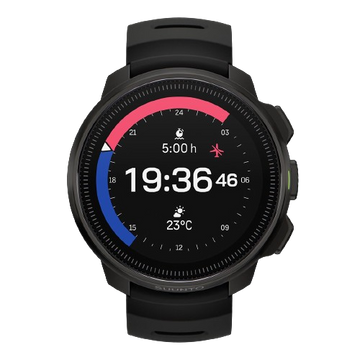
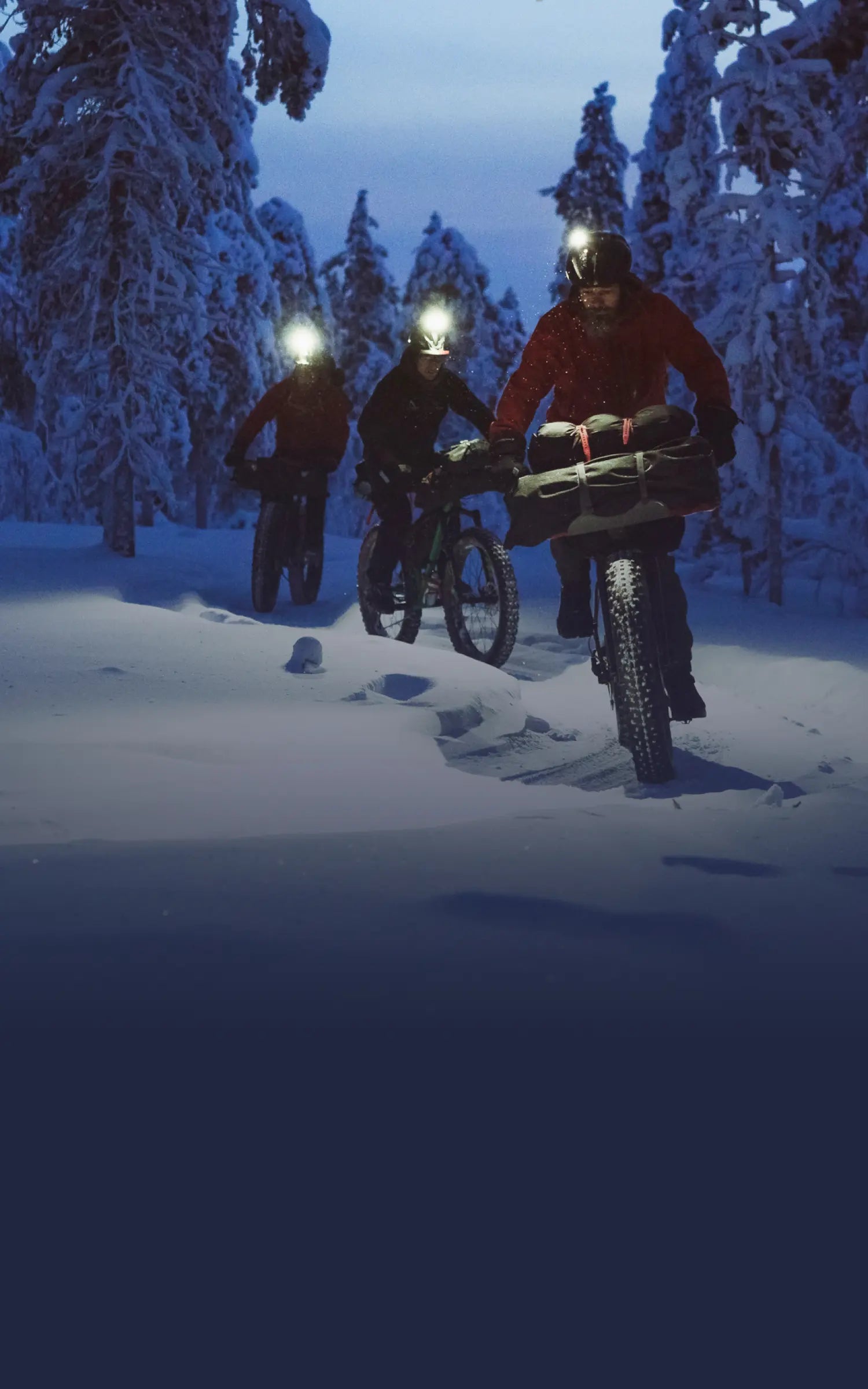
Suunto Blog

Recovery and Rest: The Key to Optimising Your Scuba Diving Performance
When it comes to maximising your diving performance, recovery is just as important as training.
Every training session pushes your body out of balance, disrupting homeostasis and temporarily lowering performance. With proper recovery, your body not only returns to baseline but adapts and improves, increasing your stamina and strength over time. Understanding how recovery works and learning how to track it can help you train smarter, dive better, and stay energised for repetitive diving and the adventures ahead.
The Role of Sleep in Recovery
Sleep is your body’s most powerful recovery tool. During deep sleep, the body releases growth hormones that repair tissues, restore energy, and support immune function. It’s when your system resets physically and mentally. Quality sleep is the foundation of recovery, performance, and overall well-being. By understanding your sleep patterns, you can better gauge your readiness for your next dive or workout and perhaps adjust accordingly.
With Suunto Ocean, tracking your sleep is effortless; just wear your watch to bed, and it does the rest. Each morning, you’ll receive a sleep summary: total sleep time, estimated time awake, and periods of deep sleep. Over time, these nightly snapshots evolve into trends and you will see a bigger picture of how well you're resting and recovering.
To view your sleep trend, swipe up from the watch face to open the Sleep widget. You’ll see your most recent sleep at a glance, along with a rolling 7-day graph that helps you recognise patterns whether you're consistently well-rested or starting to fall behind.
Tracking your sleep consistency is just as important as tracking duration. Regular sleep and wake times help support your body’s natural rhythm, making recovery more effective and energy levels more stable.
For deeper insight track your HRV during sleep to better help you understand how your body responds to training, stress, and environment, even while you rest. Read more about how to use HRV to optimize recovery.
Sleep isn’t just downtime it’s your body’s chance to reset, repair, and prepare. And now, with Suunto, it’s something you can understand better than ever.
Using HRV to Optimize Your Training
The Suunto Ocean tracks over 95 activity types, including diving, swimming, strength training, and more. Combined with HRV insights, it shows you when it’s time to push forward or pull back, ensuring a sustainable training rhythm that supports long-term performance.
HRV measures the tiny fluctuations in time between your heartbeats. It's one of the most reliable indicators of recovery and nervous system balance. A high HRV often signals that you are well rested and ready to perform. HRV isn't just a stat it’s a decision-making tool. By keeping an eye on it daily, you can tailor your training intensity, prevent overtraining, and improve overall resilience.
High HRV: Your system is adaptable and recovered. Green light for more intensity.
Low HRV: Your body is still under stress. Time to scale back or rest.Suunto Ocean monitors your HRV during sleep and after workouts, offering key insights into how your body is responding to stress and recovery.
Balancing Stress and Recovery
Peak performance comes from balance. The Suunto Ocean helps you understand your training load versus your recovery status. If your load is high and recovery is low, that’s your cue to rest before fatigue turns into burnout or injury. Technology is powerful, but your body’s signals are just as important. If you're feeling unusually sore, fatigued, or mentally drained, listen to those cues. Use the Suunto Ocean as a guide, but always tune into how you feel after your dive or your workout. Your body knows when it needs rest, and you just need to listen.
Conclusion: Rest Smarter, Dive Stronger
Recovery isn’t downtime it’s a performance tool. With the Suunto Ocean, you gain access to powerful recovery metrics like HRV, sleep quality, and training load all in one device. Prioritize rest, train with intention, and give your body what it needs to reach new depths. Because the better you recover, the better you dive.

How to Find Your Training Zones and Supercharge Your Scuba Diving Fitness
Training intensity plays a crucial role in preparing for scuba diving. It’s not just about hitting the gym or logging endless cardio, but finding the right workout intensity is the key to getting the best results, whether you want to improve your diving fitness, breath hold or boost your endurance.
What Are Training Zones?
Training zones are intensity levels that help you follow a training plan and reach progress. Each zone targets different physiological systems, helping you build the endurance, power, and control you need for scuba diving. Here’s a breakdown of the most important zones for divers:
Zone 1 – Recovery
Used for warm-ups and active recovery. It promotes blood flow, aids in muscle repair, and helps ensure you’re not overtraining before a dive. Exercising in zone 1 is relatively easy on your body. When it comes to fitness training, intensity this low is significant mainly in restorative training and improving your basic fitness when you are just beginning to exercise, or after a long break. Every day exercises like walking, climbing stairs, and cycling to work are usually performed within this intensity zone.
Zone 2 – Endurance
This is your base-building zone. It improves aerobic efficiency and stamina, perfect to prepare you for long dives or extended underwater activity. Exercising at this intensity feels easy, but workouts with a long duration can have a very high training effect. The majority of cardiovascular conditioning training should be performed within this zone. Long duration workouts in this zone consume a lot of energy, especially from your body’s stored fat. Think steady swims or long-distance walking.
Zone 3 – Tempo / Steady Effort
Exercising in zone 3 begins to be quite energetic and feels pretty hard going. It will improve your ability to move quickly and economically, ideal for when you want to improve your finning, buoyancy control, and dive longer dives. This zone boosts moderate-intensity endurance that you rely on for continuous underwater movement.
Zone 4 – High Intensity
This is where power is built and limits are tested. Training in Zone 4 pushes your anaerobic system, improving your ability to perform in high-stress, physically demanding situations like hauling gear or responding to emergencies underwater.
It’s fast, hard, and effective: a zone that rapidly boosts performance and resilience. But it’s not for every day, as too much intensity without recovery can lead to burnout or injury. Use it wisely, and Zone 4 becomes your edge when the pressure’s on.
Zone 5 – Maximum Effort
This is your redline, the zone of short, explosive bursts where you're pushing at full capacity. Training here targets your VO₂ max and anaerobic threshold, sharpening your body’s ability to respond quickly and powerfully under pressure, giving an edge in critical dive scenarios.
Zone 5 efforts are intense and brief, lasting only minutes. They demand full focus and come with a high recovery cost, which is why elite athletes use them sparingly and strategically. For most fitness enthusiasts, this zone is optional as they are not required, but if you are chasing peak performance, include maximum-intensity workouts in your training program.
How to Calculate and find your heart rate zones
It is important to know your zones to be able to follow a training plan and to keep structure in your training. Use the classic formula (220 – your age) to estimate your max heart rate. You can build your zones off this baseline, but refine it as you get more experience. Once you know your zones, you can focus on gradual progression, tailoring each session to meet your diving goals.
The Suunto Ocean makes zone-based training easy. Use its built-in heart rate monitor and analytics to track how your body is responding to each workout. Start with a basic estimate, then refine as you go with data from your training sessions or tests. Suunto’s tools help you track it all so your training stays intentional, efficient, and aligned with your underwater ambitions.
Why Zone-Based Training Matters for Divers
Each zone develops different capabilities from long-haul endurance to explosive power. By mixing the right training intensity with purpose, you’ll condition your body for more efficient movement, better recovery, and improved control underwater. As Suunto expert Janne Kallio says:
“Training doesn’t need to be complicated.”

Diving Deeper Into Your Dive Data in the Suunto App
Diving is about more than just exploring the depths, it's a journey of continuous improvement and mastery. Learn how to use Suunto app throughout that process
Technology has become our trusted companion in the digital age, guiding us through the underwater world and empowering us to explore our limits. With the Suunto app at our fingertips, divers unite to share insights, harness cutting-edge features, and elevate their diving skills to new heights.
Join us as we delve into the depths of data analysis, uncovering the secrets that will make you a better diver with every plunge.
Dive profiles, dive logs and trends
One of the most critical pieces of data for any diver is their dive profile. The Suunto app provides detailed dive profiles, including:
Dive time
Start and stop times
Average and max depth
An algorithm deviation alert if present during the dive
Maximum and average temperature
Gas list of active and enabled gases
Start and end pressure if linked with Suunto Tank POD
Avg gas consumption for each gas if linked with Suunto Tank POD
Current Gradient Factors
CNS and OTU values
Average heart rate if enabled
Surface time
Analysing your dive profiles helps you understand your diving patterns, identify areas for improvement, and adhere to safer diving practices. Paying attention to events such as alarms, nearing no decompression limits, safety stops, ascent speed penalties, and extra time allows you to refine your practice and enhance your overall experience.
The app's comprehensive dive logs enable you to track your progress over time, identify trends, and set goals for future dives, whether aiming to increase dive time, extend gas usage, improve buoyancy control, or explore new sites confidently.
Gas consumption
Connecting with the Suunto Tank POD before a dive makes it easy to monitor your gas consumption during the dive. The Suunto app logs your gas usage over time, providing insights into your efficiency. Analyzing your consumption rate can help identify areas for optimising breathing techniques, such as improving buoyancy or learning better breathing strategies like pre-dive visualisation to help you relax more. This can aid in more effective planning for future dives. Factors such as depth, dive duration, current strength, equipment efficiency, proper weighting, individual physiology, water temperature, and appropriate dressing significantly influence your breathing rate. Understanding how these factors impact your dives helps form better habits and enables improved dive planning in the future.
Environmental conditions
Dive planning and safety get a whole lot more exciting when you truly understand the environmental conditions. The Suunto app lets you dive into a treasure trove of data, recording everything from real-time water temperatures at various depths while visibility, current strength, and weather conditions can be recorded in the notes. Imagine being able to anticipate the perfect dive site or tweak your plans based on a detailed history of your past dives. With this info at your fingertips, you're not just diving, you're mastering the underwater world, ready to adapt and conquer whatever the ocean throws your way!
Daily well-being
Track your steps, sleep, and calories with the Suunto app to keep a perfect balance between training and rest, ensuring you're always at your best. Use the feeling monitor at the end of each dive to see how your daily well-being compares to your dive experience. The Suunto app keeps all your activities—sports, adventures, and dives—in one place, with a home screen view that makes tracking your key activities a breeze.
Training load is a standout feature in the Suunto app, quantifying your training stress using Training Peaks’ Training Stress Score (TSS). Suunto app uses TSS to quantify training load. TSS is calculated based on duration and intensity. The intensity can be based on heart rate, pace or power.
To get a better understanding of the TSS values, it is good to know that a one-hour time trial effort equals 100 TSS. At the same time, a three-hour easy bike ride can accumulate the same amount of training stress. The value always depends on the intensity and duration of the effort.
Get your anaerobic threshold settings right for accurate TSS calculations, with adjustable intensity zones on Suunto devices. Track your long-term training load through the app's Diary ‘Progress’ view, monitoring Cumulative Training Load (CTL), Acute Training Load (ATL), and Training Stress Balance (TSB) to stay fit and avoid over-training.
Check out your daily activity levels or dive into your sleep patterns with the sleep tracking feature. Boosting your sleep quality today can make you a better diver tomorrow. Only time (and tracking) will tell!
Be the first to know
Get notified about the latest news, software updates, and improvements for your dive computer. With the Suunto app, divers have a powerful tool to enhance their skills, monitor their progress, and make informed decisions underwater and beyond.
From analyzing dive profiles and tracking gas consumption to understanding environmental conditions and maintaining daily well-being, every aspect of your diving journey is covered. The app not only empowers you to dive safer and smarter but also encourages continuous improvement with its comprehensive data insights and user-friendly interface.
So whether you're a seasoned diver looking to refine your technique or a beginner eager to explore new depths, the Suunto app is your ultimate companion.
Dive deeper, explore further, and enjoy the underwater world with confidence, knowing that Suunto is with you every step of the way.
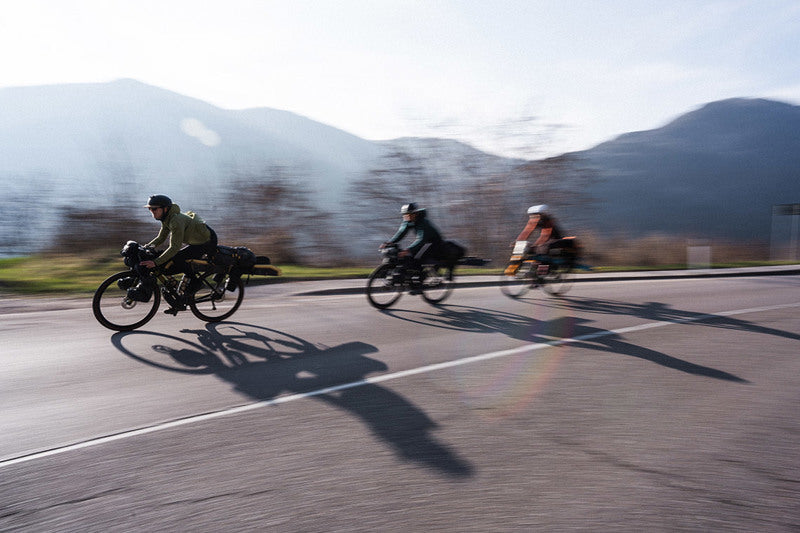
7 adventure films to watch during the holidays
Race to the Summit
Two years ago, Dani Arnold completed the biggest project of his life: climbing the six large Alpine north faces – alone and in record time. The project occupied, accompanied and shaped him over a period of 10 years. Now the Netflix is devoting a 90-minute report to three of these climbs.
Race to the Summit features the dizzying feats of Dani Arnold and the late Ueli Steck, two great Swiss alpinists and long-time Suunto ambassadors. Experienced mountaineers need a day or more to climb the infamous north faces of the Eiger or Matterhorn. But Dani and Ueli climbed them alone in less than three hours. The duel thrilled the climbing world and electrified the media.
Watch the trailer above and the full film on Netflix.
Lost Then Found
TDS winning athlete Christian Meier shares his inspiring story in Lost Then Found. Christian started his athletic career as a cyclist and has since made a transition from the pro peloton to the top of ultra-running.
”Life is a constant evolution of who you are as a person and Lost Then Found marks an important turning point in my life not only as an athlete but as an individual. From losing cycling to finding trail running this is a story of self-discovery and I am happy to be able to share that journey,” says Christian.
Arctic Lines – Sunny Car Center
In the Arctic Lines video series, backcountry snowboarder Antti Autti explores the vast wilderness of northern Finland, Sweden, and Norway. The series is now in its third season, and in the latest episode, 'Sunny Car Center,' Antti seeks—and finds—a new special zone in Northern Norway.
”Exploring expands your horizons and finding new locations is one of the most important aspects of freeriding,” says Antti.
Balkan Express
Ski mountaineers Jochen Mesle and Max Kroneck rode 2500 km from Greece to Germany – and stopped to ski along the way. Balkan Express, their film about the adventure, has won acclaim at international film festivals.
“We really wanted to experience some mountains, cultures, people we didn't know. We looked at a map of Europe and saw that the Balkans are pretty interesting. The sport side wasn’t the main focus of the project. It was about getting to know the culture and people,” says Max.
Nomadland – Bikepacking in Mongolia
Alba Xandri and Erreka Calmet found beautiful landscapes, friendly people and an epic adventure while bikepacking in in the Mongolian grasslands – and made a film about it.
”Mongolia far exceeded our expectations. It is a backcountry bikepacker’s paradise,” says Alba.
Ride to Ski – Bikepacking adventure through the Dolomites
Lack of snow forced Henna Palosaari to think outside the box and led her to invite two of her friends, Sami Sauri and Malva Björkman, on a bike & ski adventure. The 9-day journey that combined two of her favorite sports, turned out to be a beautiful mix of sweat, laughs, ice, snow, and friendship.
”It wasn’t a pure sufferfest,” Henna laughs.
Max Ammer, Raja Ampat and the richest reefs in the world
This is an oldie but goldie: Max Ammer, founder of Papua Diving and two Eco Resorts, Sorido Bay and Kri Eco Resort, shows us why these incredible projects are more than just places to stay, dive and enjoy the unique ecosystems.
Over the past 30 years, a remarkable conservation project has unfolded. The local team, with unwavering dedication, has prioritized the protection of the flourishing ecosystem. This strategic focus has proven to be wise, as the tangible outcomes of their hard work, long-term planning, and precise execution are evident in the thriving fish and coral counts. This stands as a rare case where the reefs are experiencing unprecedented richness – and gives hope for other areas as well.
Lead image by Richard Bucher / Ride to Ski
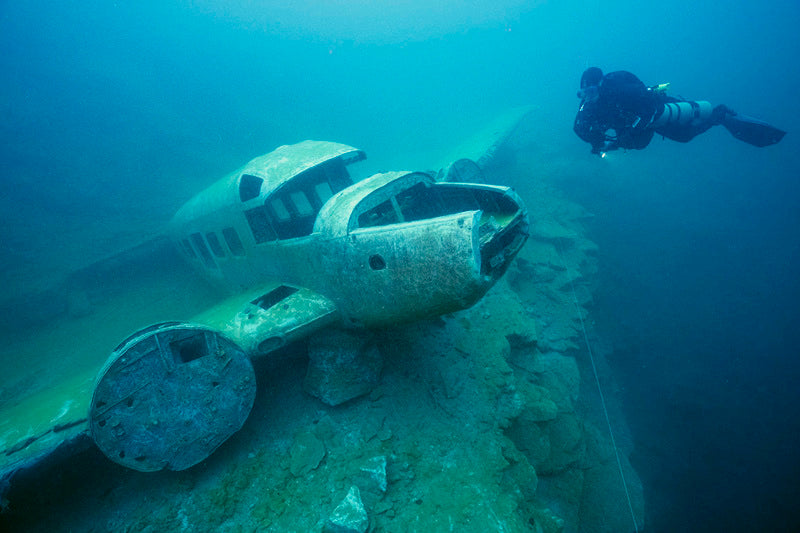
Paying it forward
Text and images by Jill Heinerth
Last summer, I embarked on a transformative journey alongside the passionate young environmental scientist, Kayla Martin. It was a season that left an indelible mark on both our lives, a tale of mentorship, perseverance, and the power of community.
Kayla Martin playing in the sea foam in Les Escoumins.
The story began when I seized a unique opportunity to nurture Kayla's burgeoning talent. She was a beacon of potential, and I was determined to foster her growth. Drawing upon the network of organizations that support me, I took a leap of faith and dipped into my personal funds to launch an expedition. This venture was more than just a scientific mission; it was the next step in her career in environmental science and communication.
As we prepared for the adventure that lay ahead, we ventured into local waters, diving to enhance our skills in the cold underwater environments we were about to explore and document. Yet, it didn't take long for me to realize that Kayla needed more reliable gear to navigate these unforgiving waters. In this critical moment, when determination met resourcefulness, Suunto came to our aid by transferring my annual gear support to her. Hollis, recognizing the importance of our mission, provided Kayla with a state-of-the-art sidemount harness, and Fourth Element crafted a snug, protective drysuit to keep her warm in the chilly depths. I passed along essential equipment like a backup computer, undergarments, and various other items she required for our underwater expedition.
A small plane lies in a freshwater quarry in Quebec, one of the first stops on their expedition.
The result was a remarkable collaboration that transcended the boundaries of our initial project. Our shared dedication to environmental preservation and scientific exploration continues to flourish. Fast forward to the present day, and Kayla has emerged as a trailblazing leader in her field. This year, she is at the helm of an expedition dedicated to surveying an undocumented shipwreck, an endeavor that exemplifies her unwavering commitment to education, conservation, and groundbreaking environmental research.
Our journey serves as a testament to the profound impact that a helping hand and the right tools can have on shaping a promising career. Diving is an expensive passion, and the financial barriers often deter young enthusiasts from pursuing studies that could safeguard our precious planet. This experience has reinforced the belief that if you encounter a young and eager individual in your midst, someone who harbors the potential to be a future leader in their field, consider rallying your community to lend support. When we equip and empower the next generation, the possibilities are limitless, and together, we can shape a brighter future for our world.
Watch now: How Great Lakes Freshwater is Linked to the Ocean
More people have walked on the moon than have been to some of the remote places Jill Heinerth has explored on Earth. Jill Heinerth is a veteran of over thirty years of scientific diving, filming/photography, and exploration. Her expeditions include the first dives inside Antarctica icebergs and record-breaking scientific missions in deep underwater caves worldwide.
Jill’s book INTO THE PLANET – My Life as a Cave Diver has drawn wide acclaim from the New York Times, Wall Street Journal, NPR, and even Oprah magazine. Her children’s book, THE AQUANAUT, has been selected by Dolly Parton’s Imagination Library as a part of her inspirational initiative. Jill bought her first Suunto gear in 1988 and still dives with Suunto.
For more info: www.IntoThePlanet.com
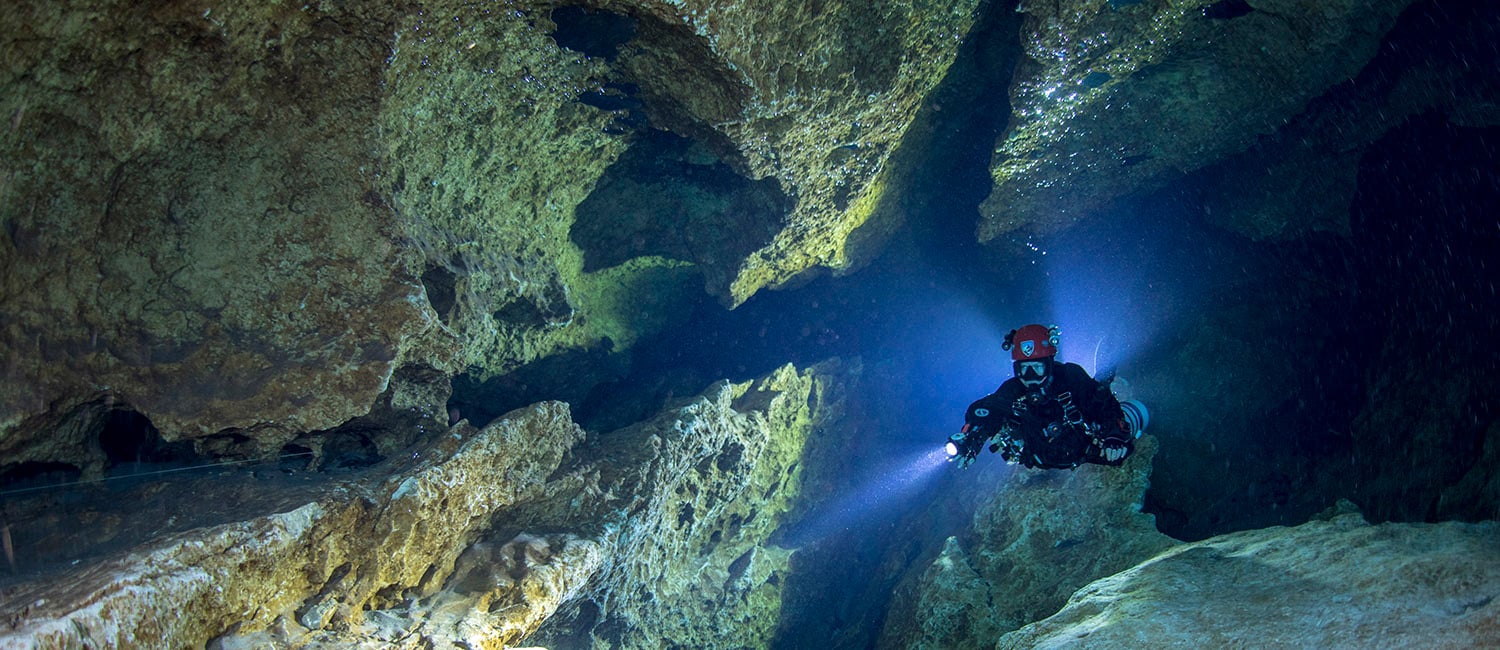
The Secrets of Earth's Hidden Waterways
By Jill Heinerth
Deep beneath our feet lies a mesmerizing world that remains largely unknown: a network of water-filled caves winding through the darkness, carrying the lifeblood of our planet. As a cave diver, I have dedicated my life to exploring these mysterious subterranean passages. I invite you to join me on a captivating journey into the depths, where fear and discovery converge, and where the delicate balance of survival and exploration unfolds.
The Hidden Pathways
These underground tunnels, sculpted by the gentle touch of rainwater permeating the Earth's surface, act as conduits that transport precious freshwater from deep aquifers to springs, rivers, and estuaries. Ultimately, this water embarks on a journey to the vast ocean, sustaining a thriving plankton community that generates the very oxygen we breathe. The caves I explore serve as the life-supporting veins of our planet, nurturing the lungs that allow life to flourish.
The Thrill of Exploration
While most people recoil at the thought of descending into the darkness of caves, I am irresistibly drawn to their constricted corridors. Equipped with cutting-edge technology and relying on each measured breath, I embrace the unknown depths. In the remoteness of my office, the boundaries between fear and discovery blur, and a single misstep could spell disaster. The exploration of these caves is not without risk, but the reward is an unparalleled sense of fulfillment and a chance to educate others about the fragility of our water planet.
A Perilous Pursuit
Cave diving has rightfully earned its reputation as a dangerous activity, but it also represents the frontier of scientific exploration. Aquanauts, including passionate enthusiasts, daring researchers, and scientists, push the limits of human capability as they navigate through the eternal darkness of labyrinthine limestone networks spanning the globe. Armed with multiple scuba tanks, advanced rebreathers, and swift diver propulsion vehicles, they boldly venture deep into these treacherous passageways, pushing the boundaries of exploration in terms of both distance and knowledge.
Unleashing Art and Science
As a filmmaker and photographer, I find myself balancing the creation of art with the meticulous monitoring of life support equipment in demanding circumstances. Whether I embark on solo adventures or join scientific expeditions, self-sufficiency becomes paramount. There is no Mission Control to solve my problems when I find myself blindly searching for a broken safety line in a cloud of silt with zero visibility. The challenges are immense, but so are the rewards.
Unveiling Hidden Wonders
Through my explorations, I have had the privilege of becoming the eyes and hands of scientists, unveiling a world that has never before been witnessed. Underwater caves serve as virtual museums of natural history, where I collaborate with biologists to uncover new species, assist physicists in studying climate change, and aid hydrogeologists in examining our precious freshwater reserves. These subterranean pathways have led me to grim sources of pollution, vibrant life thriving within Antarctic icebergs, and even ancient skeletal remains of the Maya civilization in the Yucatan Peninsula.
Connecting to the Source
By venturing into the world beneath our feet, I glide through limestone, passing beneath homes, golf courses, and restaurants. I delve into the ancient conduits of volcanoes and navigate crevices within colossal bodies of ice. Following the trail of water, I am guided from mountain creeks to resplendent blue springs, each emitting its life-sustaining bounty from within the heart of our planet. Even when the passages pinch and my dive is forced to come to an end, the water continues to flow from some enigmatic source. The journey is endless, beckoning me forward to explore the caverns, immeasurable to my imagination.
It is a privilege to uncover these hidden shrines and share concealed mysteries from deep inside our planet. I want to connect humanity to where their water comes from and show people that what we do on the land’s surface will eventually be returned to us to drink.
More people have walked on the moon than have been to some of the remote places Jill Heinerth has explored on Earth. Jill Heinerth is a veteran of over thirty years of scientific diving, filming/photography, and exploration. Her expeditions include the first dives inside Antarctica icebergs and record-breaking scientific missions in deep underwater caves worldwide.
Jill’s book INTO THE PLANET – My Life as a Cave Diver has drawn wide acclaim from the New York Times, Wall Street Journal, NPR, and even Oprah magazine. Her children’s book, THE AQUANAUT, has been selected by Dolly Parton’s Imagination Library as a part of her inspirational initiative. Jill bought her first Suunto gear in 1988 and still dives with Suunto.
For more info: www.IntoThePlanet.com







































